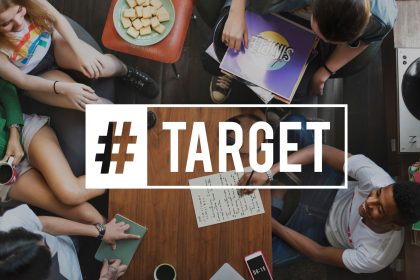Digital marketing has transformed how businesses reach people. It’s no longer just about selling—it’s about creating relationships where both businesses and customers grow together. This concept, called mutual growth, is a win-win approach. Businesses succeed by helping customers, and customers reward them with loyalty. In this article, we’ll explain mutual growth, why it’s key in digital marketing, and how to use it, backed by real data and examples.
What Is Mutual Growth?
Mutual growth happens when businesses and customers benefit each other. Instead of only chasing sales, companies offer value—like tips, solutions, or great experiences. Customers, in return, trust the brand and stick around. Think of it as teamwork: businesses give, and customers give back.
In digital marketing, this plays out online through social media, emails, or websites. For example, a company might share free advice on Instagram. Customers learn something useful, and the business builds a connection. That’s mutual growth.
Why Mutual Growth Matters
The online world is packed. In 2023, over 5.3 billion people used the internet globally (Statista, 2023). With so much competition, businesses can’t just rely on loud ads. People want value. A HubSpot report found that 70% of consumers prefer learning about brands through content, not ads (HubSpot, 2023). They like blogs or videos over sales pitches. Trust matters too—81% of people need to trust a brand before buying (Edelman, 2022). Mutual growth builds that trust.
How Businesses Can Use Mutual Growth
Here’s how businesses can make mutual growth work online.
1. Create Helpful Content
Content is huge in digital marketing, but it should help, not just sell. A fitness brand could share free workout plans. Customers get healthier, and the brand gains fans. Companies with blogs see 67% more leads (Demand Metric, 2022). Use tools like Canva to make posts or videos that teach something useful.
2. Listen and Respond
Digital marketing is a two-way conversation. A 2022 survey showed 79% of people expect brands to reply online (Sprout Social, 2022). Answering comments or questions shows you care. Tools like Hootsuite help track what people say. Listening turns followers into friends.
3. Offer Rewards
Rewards keep customers happy. A study found 87% of people want loyalty programs (Bond Brand Loyalty, 2023). Discounts or freebies work wonders. Starbucks’ app gives points per purchase—customers get free coffee, and Starbucks keeps them hooked.
4. Teach, Don’t Sell
Educate instead of pushing products. A software company could host free webinars. Customers learn, and the brand shines. 96% of people watch explainer videos to understand products (Wyzowl, 2023). Tools like Zoom make this easy.
5. Partner with Customers
Involve customers by sharing their stories or ideas. User-generated content, like reviews, is powerful—79% of people say it sways their purchases (Stackla, 2021). A clothing brand could ask fans to post outfit pics with a hashtag. It’s free marketing, and customers feel valued.
Real-Life Examples
- Patagonia: They share eco-friendly tips, aligning with their mission. In 2022, their revenue hit $1.5 billion (Forbes, 2023).
- HubSpot: Free tools and courses win them over 205,000 customers (HubSpot, 2024).
- TOMS: For every shoe sold, they donate one. They’ve sold 100 million pairs (TOMS, 2023).
Benefits of Mutual Growth
Mutual growth boosts sales, loyalty, and reputation for businesses. Customers gain value—knowledge, rewards, or community. Brands with strong relationships earn 23% more revenue (Gallup, 2022). Plus, 68% of people switch brands if ignored (Zendesk, 2023), so connection matters.
Challenges
It takes effort to create content or respond to customers. Some fear giving too much for free. But companies investing in relationships see 2x more growth (Bain & Company, 2022). Start small—like a free guide—and adjust.
The Future
By 2025, 80% of customer interactions will be online (Gartner, 2023). Mutual growth will be essential. Businesses that build trust now will lead.
Note
Mutual growth is simple: help customers, and they’ll help you. With tools and the right approach, it’s a path to success. The data proves it—when both sides win, growth lasts. Start today with a tip, a reply, or a reward.
References
Bain & Company. (2022). The value of customer relationships. https://www.bain.com
Bond Brand Loyalty. (2023). 2023 loyalty report. https://www.bondbrandloyalty.com
Demand Metric. (2022). Content marketing benchmarks. https://www.demandmetric.com
Edelman. (2022). 2022 trust barometer. https://www.edelman.com
Forbes. (2023). Patagonia’s $1.5 billion year. https://www.forbes.com
Gallup. (2022). Customer engagement and revenue. https://www.gallup.com
Gartner. (2023). Future of customer interactions. https://www.gartner.com
HubSpot. (2023). State of inbound marketing. https://www.hubspot.com
HubSpot. (2024). HubSpot customer stats. https://www.hubspot.com
Sprout Social. (2022). Social media engagement report. https://www.sproutsocial.com
Stackla. (2021). The power of user-generated content. https://www.stackla.com
Statista. (2023). Global internet users 2023. https://www.statista.com
TOMS. (2023). Impact report. https://www.toms.com
Wyzowl. (2023). Video marketing statistics. https://www.wyzowl.com
Zendesk. (2023). Customer experience trends. https://www.zendesk.com














